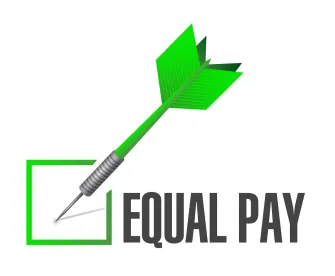On April 27, 2017, the Ninth Circuit[1] issued an opinion in Aileen Rizo v. Jim Yovino that provides employers with guidance on how to lawfully implement facially-neutral business policies using prior salary information to set a new employee’s salary, without running afoul of the federal Equal Pay Act (“EPA”). While there has been some backlash regarding this recent decision, the Court’s ruling was consistent with its prior holding in Kouba v. Allstate Insurance Co.[2] when it vacated the lower court’s decision that denied Defendant Jim Yovino’s (“County”[3]) motion for summary judgment, and directed that the lower court consider the County’s hiring procedures in light of certain factors set forth in the Kouba case (as detailed below).
In 2009, Plaintiff Aileen Rizo (“Plaintiff”) began working for the Fresno County School District. Her starting salary was determined using the school district’s standard salary schedule, “Standard Operating Procedure 1440[4],” which was routinely and uniformly applied to all management-level employees, including Plaintiff. Based on the County’s application of this facially neutral policy, which is based on an employee’s prior salary, Plaintiff’s pay was lower than those of her colleagues with higher past salaries, including her male coworkers.
The pay disparity between Plaintiff and her male coworkers was undisputed by the County in this case. But, the County argued that its use of prior salary falls squarely under one of the affirmative defenses to the EPA – i.e., that prior salary amounts to an “other factor other than sex.”[5]
Plaintiff responded by arguing that if an employer’s pay structure is based “exclusively on prior wages,” then any resulting pay differential between men and women cannot be interpreted to be based on “any other factor other than sex.” Her position was consistent with Tenth and Eleventh Circuit decisions and the EEOC’s stance on this topic. Plaintiff further claimed that the use of prior salary alone can’t be considered a “factor other than sex” because it perpetuates existing pay disparities and further undermines the purpose of the Equal Pay Act. The lower court agreed with Plaintiff and found that women’s earlier salaries are likely to be lower than men’s because of historical gender bias; but, the District Court also acknowledged that its decision potentially conflicted with the 1982 decision in Kouba.
On appeal, the Ninth Circuit vacated the District Courts decision and held that its earlier decision in Kouba was controlling in the present case. In its opinion, the Ninth Circuit held that the Kouba decision “allow[s] an employer to base a pay differential on prior salary so long as it showed that its use of prior salary effectuated some business policy and that the employer used the factor reasonably in light of its stated purpose and its other practices.” Here, the County offered four business reasons for it policy: (1) the policy is objective, in the sense that no subjective opinions as to the new employee’s value enters into the starting-salary calculus; (2) the policy encourages candidates to leave their current jobs for jobs at the County, because they will always receive a 5% pay increase over their current salary; (3) the policy prevents favoritism and ensures consistency in application; and (4) the policy is a judicious use of taxpayer dollars.
The matter was remanded to the District Court for (1) an evaluation of the four business justifications offered by the County regarding its gender-neutral preset pay scale, and (2) a determination of whether the County’s use of employees’ prior salary is “reasonable in light of [its] stated purpose” under the standard set forth in Kouba.
Many states, including California, recently revised their state law equal pay protections to address the use of prior pay in hiring decisions, and whether it perpetuates prior pay discrimination. In particular, California’s equal pay law now includes a provision that expressly prohibits the use of prior salary “by itself [to] justify any disparity in compensation.” Interestingly, California’s amendment, which was passed prior to the Ninth Circuit’s decision, was not addressed at all in the decision. But, arguably here, all allegedly discriminatory decisions were made prior to the amendment’s passage.
In light of these new state and local laws’ prohibitions and/or restrictions on the use of prior pay as a determinant in setting an applicant’s salary, even if the Ninth Circuit finds that the federal Equal Pay Act permits the use of pay history for this purpose (under certain circumstances), in many jurisdictions, state and local laws will prohibit it. Employers should be aware both of the split in the circuits on this issue, and also of any applicable amendments to state and local equal pay laws that may impact their ability to rely on prior pay in setting an applicant’s rate of pay.
[1] The panel included Circuit Judges A. Wallace Tashima and Andrew D. Hurwitz and the Honorable Lynn S. Adelman, U.S. District Judge for the Eastern District of Wisconsin, sitting by designation.
[2]Kouba v. Allstate Insurance Co. ( 9th Cir. 1982) 691 F.2d 873.
[3] As Defendant Jim Yovino was sued in his official capacity as the Fresno County Superintendent of Schools, the Ninth Circuit utilized the word “County” when referring to the Defendant. For simplicity, we utilize the same term.
[4] To determine a candidate’s salary using “Standard Operating Procedure 1440,” the County applies a 5% increase to an individual’s most recent prior salary, then places the candidate on a “step” of the County’s salary schedule based on that calculated amount. This schedule consists of twelve “levels,” each of which contains ten “steps.”
[5] Under the EPA, a wage disparity is permissible if an employer can plead and prove an affirmative defense based on one of the following exceptions: (i) a seniority system; (ii) a merit system; (iii) a system which measures earnings by quantity or quality of production; or (iv) a differential based on any other factor other than sex.




 />i
/>i
